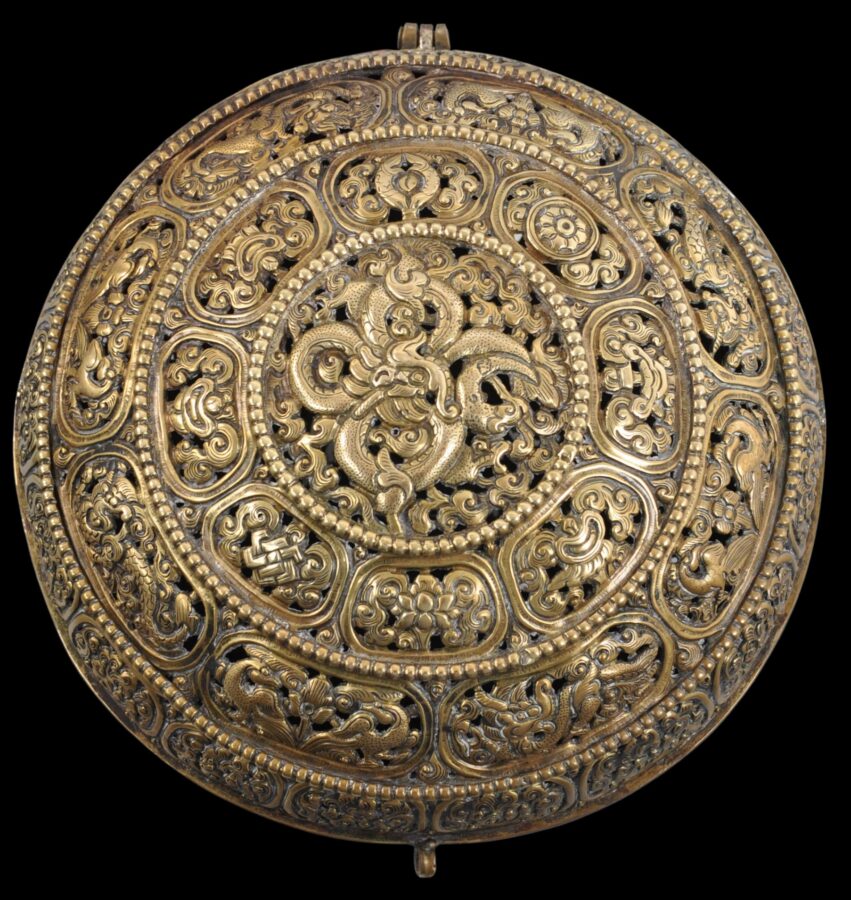This large, beautiful and elaborate box of flattened, spherical form is most probably a betel box intended for a Bhutanese. Betel boxes made for aristocrats and later members of the royal family (once Bhutan actually had one) traditionally were made from parcel-gilt silver. This example, being of gilded, or gold-plated copper is unusual. The ample covering of gold (which tests at around 14 carats and is thickly applied) suggests upper class origins as does the complexity and fineness of the design.
It comprises two halves that have been hinged together.
Both halves are the mirror of each other, with each having a central roundel of a Himalayan dragon figure curled amid pierced, scrolling foliage.
The roundels are surrounded by three concentric circular borders of pierced cartouches of flowers and then Himalayan motifs such as snow lions.
It is likely that a box such as this was commissioned as a gift. It is also highly likely that it was not intended for everyday use, and that it was stored in a textile sleeve to protect it.
The form of the box seems based on that of the large Chinese cinnabar lacquer circular ‘Dragon’ boxes and covers, that date to the 18th century, and earlier. These too were given as diplomatic and other high level gifts by the Imperial Court in Beijing.
A silver example of similar form is illustrated in Schicklgruber & Pommaret (1997, p.213.) It is described as an ‘elaborate betel leaf and areca nut box (bata)…that would have been used by the nobility and clergy’.
Betel or paan was chewed in Bhutan as it was (and in some cases, still is) in India and Southeast Asia. The actual nut comes from a certain palm tree which was sliced, wrapped in a betel leaf along with powdered lime (usually obtained from crushed, burned seashells or coral) and chewed to give a mild narcotic effect.
The box here is in excellent condition.
References
Myers, D., and S. Bean (eds), From the Land of the Thunder Dragon: Textile Arts of Bhutan, Serindia, 1994.
Schicklgruber, C., & F. Pommaret, Bhutan: Mountain Fortress of the Gods, Serindia Publications, 1997.
Thinley, K., Phelchey Toenkhyim: The Heritage Museum – Traditions of Bhutan, Jomo Publications, 2006.













